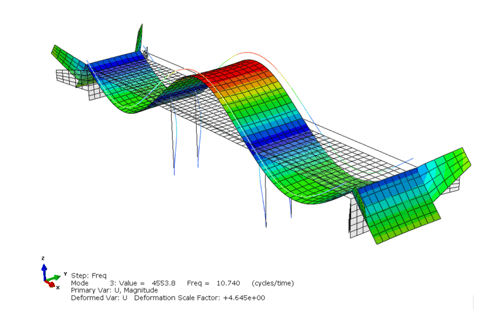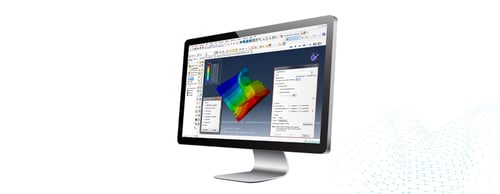Simpack is the MBS technology leader on the market. It provides all required tools to perform Multi-Body simulations - ergonomic interface and high-end class solvers. Simpack has holistic software architecture, which means that all features are compatible and distributed in modules due to their particular application or use in the specific branch of the industry, from the general machinery through automotive, rail and wind turbines etc.
The common property all kind of MBS models are that, they can express mechanical and mechatronic systems, resulting in the evaluation of their complex dynamic behavior.
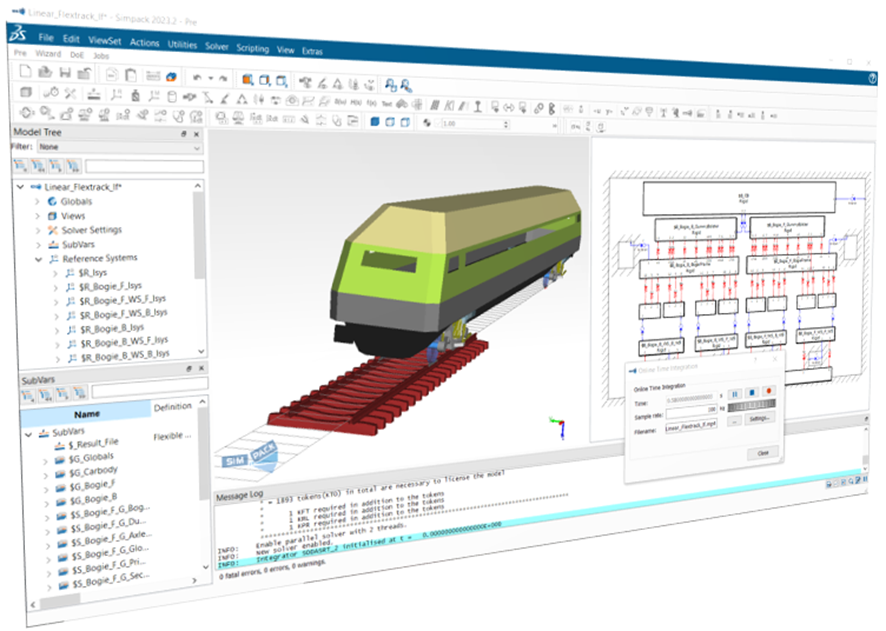
Figure 1. Simpack is high-end Multi-Body simulation solution.
What is Simpack Flextrack?
The Rail module allows the Simpack users to setup rigid tracks for their railway vehicles. FlexTrack is a set of features which enables to use deformable railway track in Simpack. Besides details what the structure of the railroad really is, the assumption that every component of the model is rigid is common for all kinds of Multi-Body simulations.
When to use Simpack Flextrack?
The simplest answer is always when rigid body constraint is a limitation for you. This is due to the simulated phenomenon and the complexity of the analyzed systems. Higher level of details increases the frequency range involved in calculations in terms of applied excitations and dynamic response. One of the sources of this might be influenced by carriage in motion on the flexible rail track. The deformations of the ideal track line affect directly on the contact patch and interaction forces occurred between wheel and rail.
How to use It?
Actually, you need two additional simulation tools: Simpack FlexTrack add-on and the Finite Element Method software (Abaqus is recommended). Please let us know if you are interested in any of these two Dassault Systemes products. FE modeling is an intermediate stage required during setting FlexTrack in Simpack. The FE models must be coincident with the defined track geometry, i.e. course of the track centerline and their layouts and also gauge and orientations of rails. Other aspects of modeling are just related with type of the track superstructure – rails on sleepers and ballast or concrete slab with or without taking into account specifics of ties systems and rail attachment devices.
Linear FlexTrack
So, it is super easy to use. The Linear FlexTrack is one of the FlexTrack type, which does not require a substructure generation step. The global FE model is used directly without reduction to the superelement. You need only to describe flexible track by extracting a set of eigenmodes and two characteristic node sets for each center of the rail head. Figure 2 shows the selected mode shape of this set that needs to be resolved.
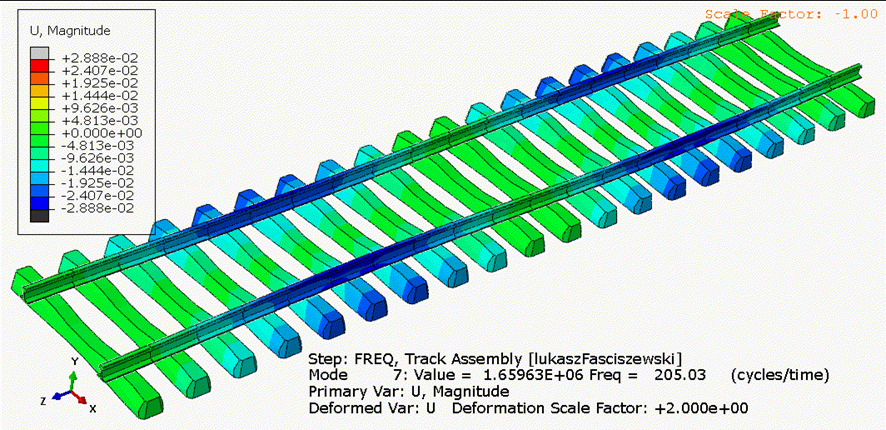 Figure 2. The shape of 7th eigenmode of an flexible railway track FE model.
Figure 2. The shape of 7th eigenmode of an flexible railway track FE model.
Go ahead with an example
The straight railway road with a flexible track section was prepared for the demonstration. The railway track consists of UIC60 rails laid on PS-94 sleepers with a crossfall 1:40 and a spacing of 0.6 m, which are proper for the 1st class tracks according with the rail industry standards. The fastening system of rails and the foundation of sleepers were assumed as purely elastic. The FE model of linear flexible track was created first in Abaqus then integrated into the MBS simulation scenario configured in Simpack.
Results
The total mass of the vehicle is about 31.310 tons, which gives an axle load of 76.8 kN in the case of a four-wheelset wagon. Figure 3 shows the history of the vertical force transferred from the front wheelset to both rails. The diagram is focused on the difference between stable load transfer on a rigid track and the noised signal on a flexible track.
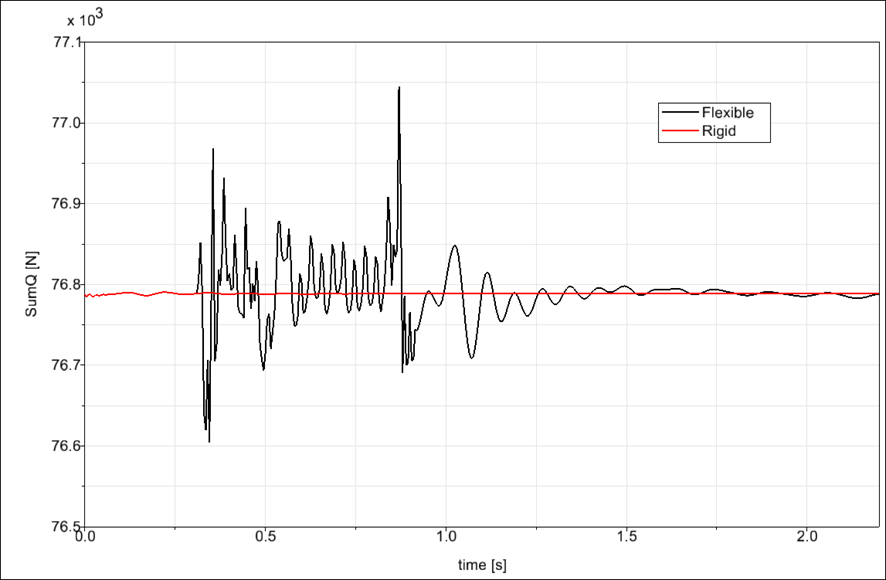
Figure 3. Sum of the vertical forces from front wheelset.
Of course, it is possible to plot a contour map of the deformation itself, but instead of that let’s take a closer look at the rail-wheel interface. The animations from Figure 4 are extracted from the simulation history to show only the wagon passage through the FlexTrack. On the right side of this Figure the evolution of normal contact stresses could be observed with respect to the shape of the wheel pressure surface and the position of this wheel along the track shown on the right. Thus, the flexibility of the track directly influences the contact situation as expected.
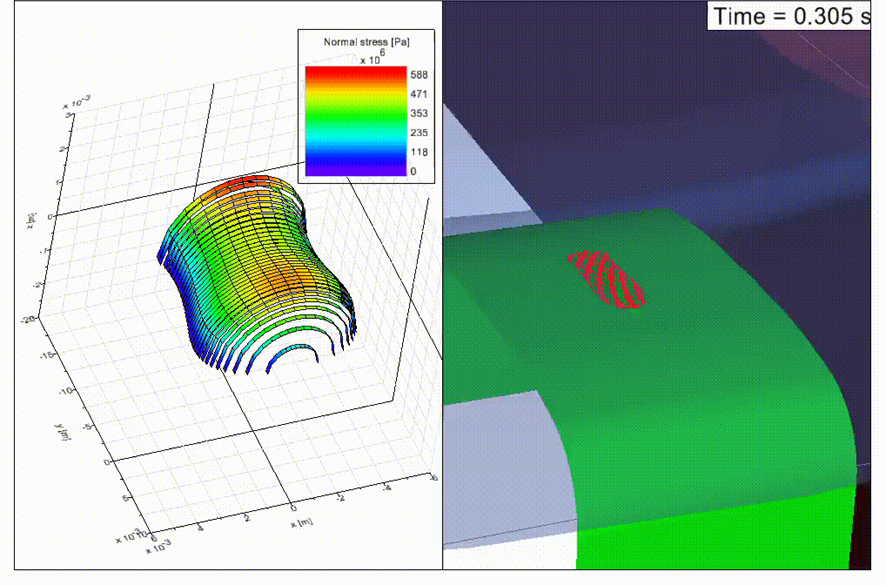 Figure 4. Normal stress distribution (left) and contact area (right) on the rail surface.
Figure 4. Normal stress distribution (left) and contact area (right) on the rail surface.
Recap
The impact of the flexible bodies in MBS was presented with the help of railway track example. It will be even more noticeable in slender track structures such as bridges, while maintaining the proper position of the rails due to deformations. The applications can be much vaster on case by case basis and are most often associated with stress hotspots and utilized in wear and fatigue life estimation.
Are you interested in enhancement of your MBS models with flexible bodies like tracks or structural components? Not convinced enough yet? Do you want to try BRIGADE software for computer aided bridge design? Maybe you are also looking for products like fe-safe or Simpack Wear to support your fatigue and wear calculations?

 Advanced Simulation
Advanced Simulation


